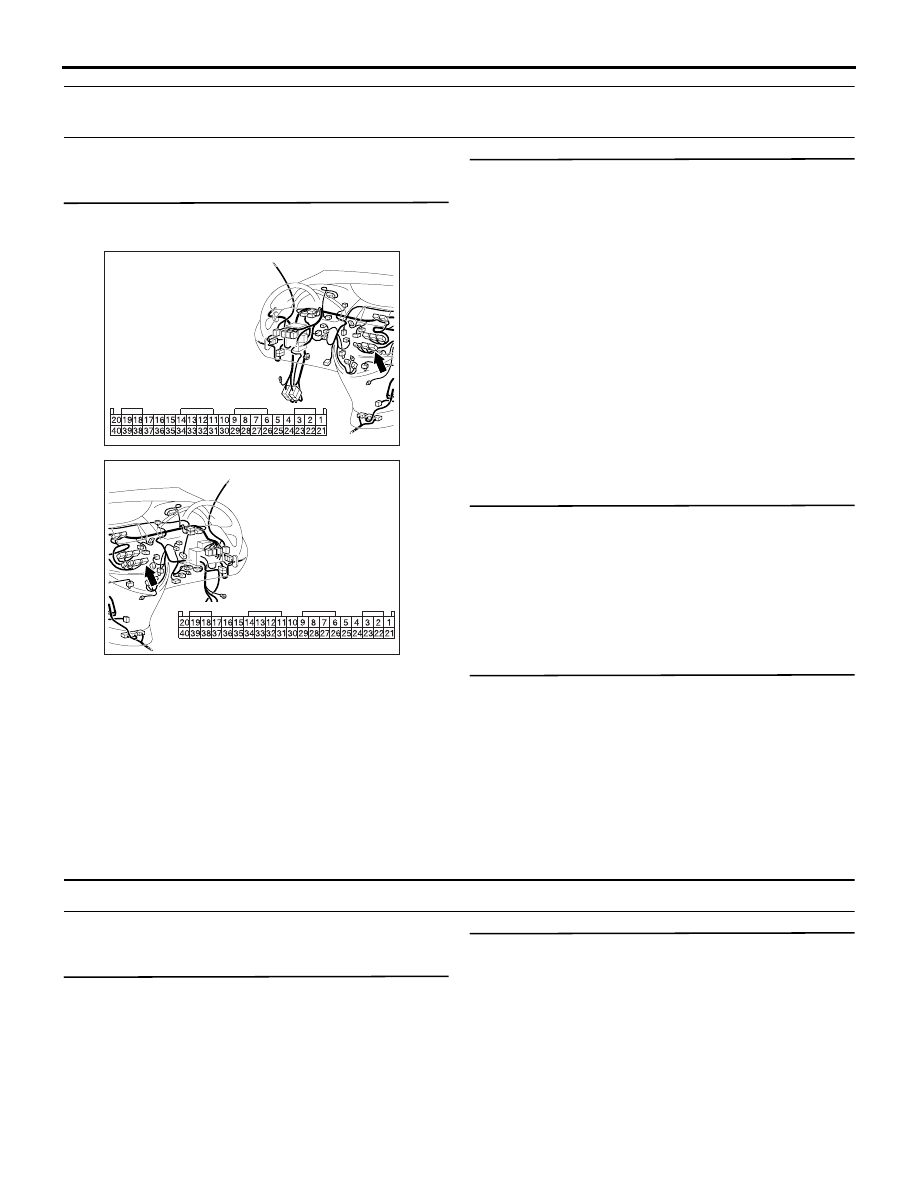Mitsubishi Grandis. Manual - part 377

RADIO AND CD PLAYER
CHASSIS ELECTRICAL
54A-127
INSPECTION PROCEDURE 9: Some Noise Appears When There is Vibration or Shocks During
Travelling.
DIAGNOSIS PROCEDURE
Step 1. Connector check: Radio and CD player
connector C-20.
Q: Is radio and CD player connector C-20 in good
condition?
YES :
Go to Step 2.
NO :
Repair or replace the connector. Check that
there is no noise.
Step 2. Check that noise appear when the radio
switch is turned on while the vehicle is stopped
and the radio is tapped while tuned away from a
station.
NOTE: Static electricity noise: Body static electric
from the shock absorber rubber bushings used to
prevent vibration, tires, etc. occurs because of
separation from the earth, causing a buzzing noise.
Since no measures can be taken to discharge the
static electricity of the vehicle body. Check that there
is no noise.
Q: Does noise appear when the radio switch is turned
on while the vehicle is stopped and the radio is
tapped while tuned away from a station?
YES :
Go to Step 3.
NO :
It may be static electricity noise.
Step 3. Check that the radio correctly earthed.
The radio is connected to the earth with an
assembling screw.
Q: Is the radio correctly earthed?
YES :
Go to Step 4.
NO :
Tighten the screw securely. Check that
there is no noise.
Step 4. Check by replacing the radio and CD
player.
Q: Are operations normal when using another radio
and CD player?
YES :
Either repair or replace the radio and CD
player. Check that there is no noise.
NO :
Either repair or replace the antenna
assembly. Check that there is no noise.
INSPECTION PROCEDURE 10: Noise Sometimes Appears on FM during Travelling.
DIAGNOSIS PROCEDURE
Step 1. Check the state of the antenna.
Q: Is the mast antenna assembled?
YES :
Go to Step 2.
NO :
Assemble the mast antenna. Check that
there is no noise.
Step 2. The check after adjusting the radio.
Q: Readjust the radio. Is the noise eliminated?
YES :
Check that there is no noise.
NO :
Go to Step 3.
AC310613
BF
Connector: C-20 <LHD>
Harness side
AC310631BB
Connector: C-20 <RHD>
Harness side